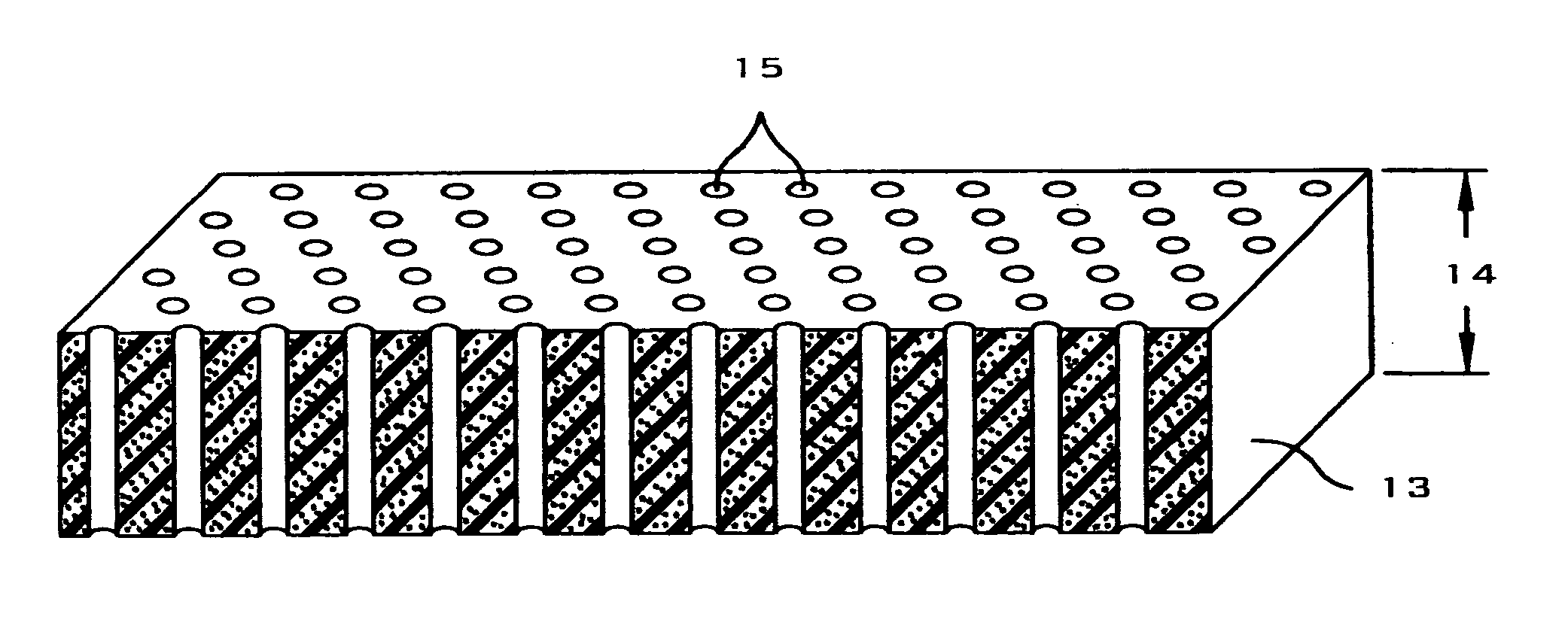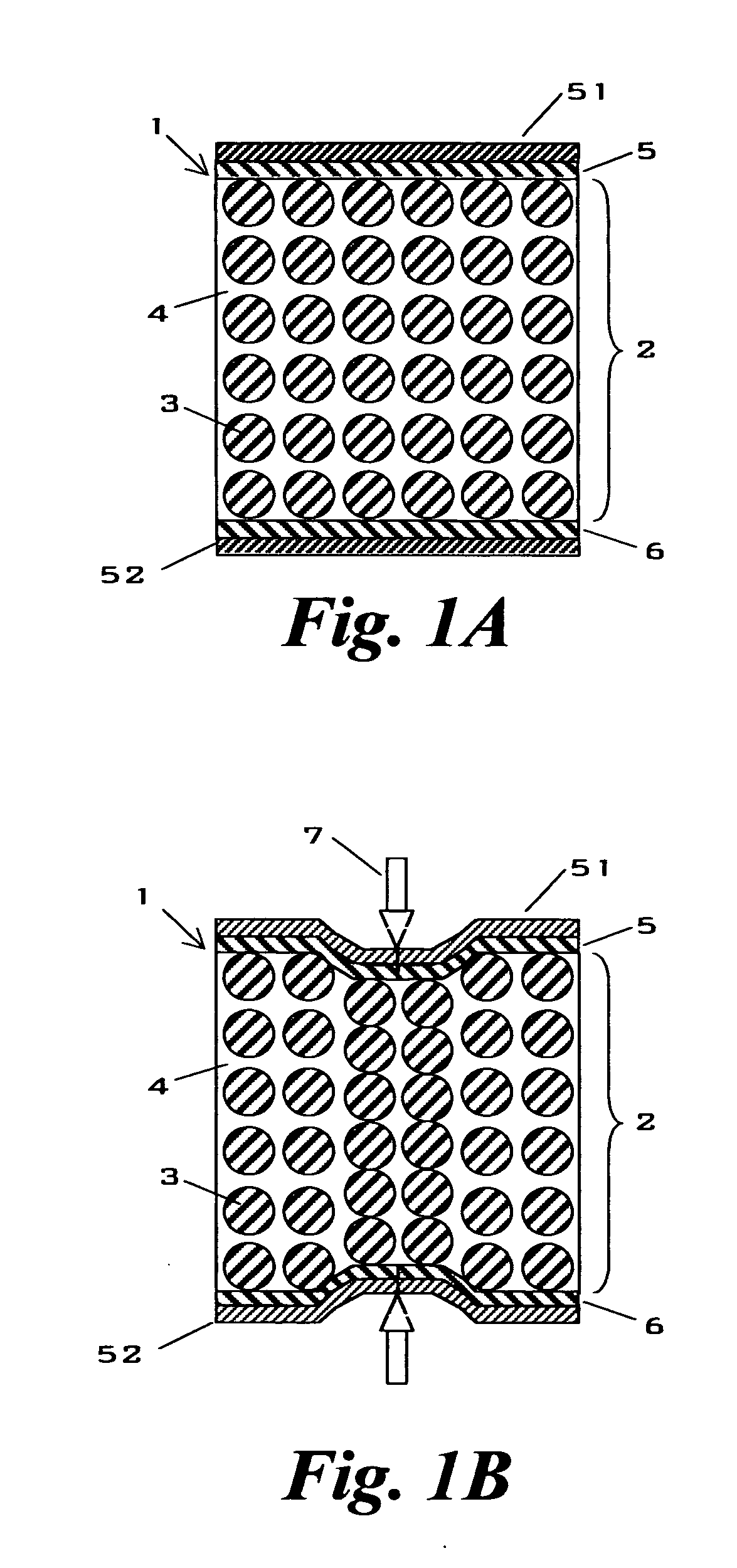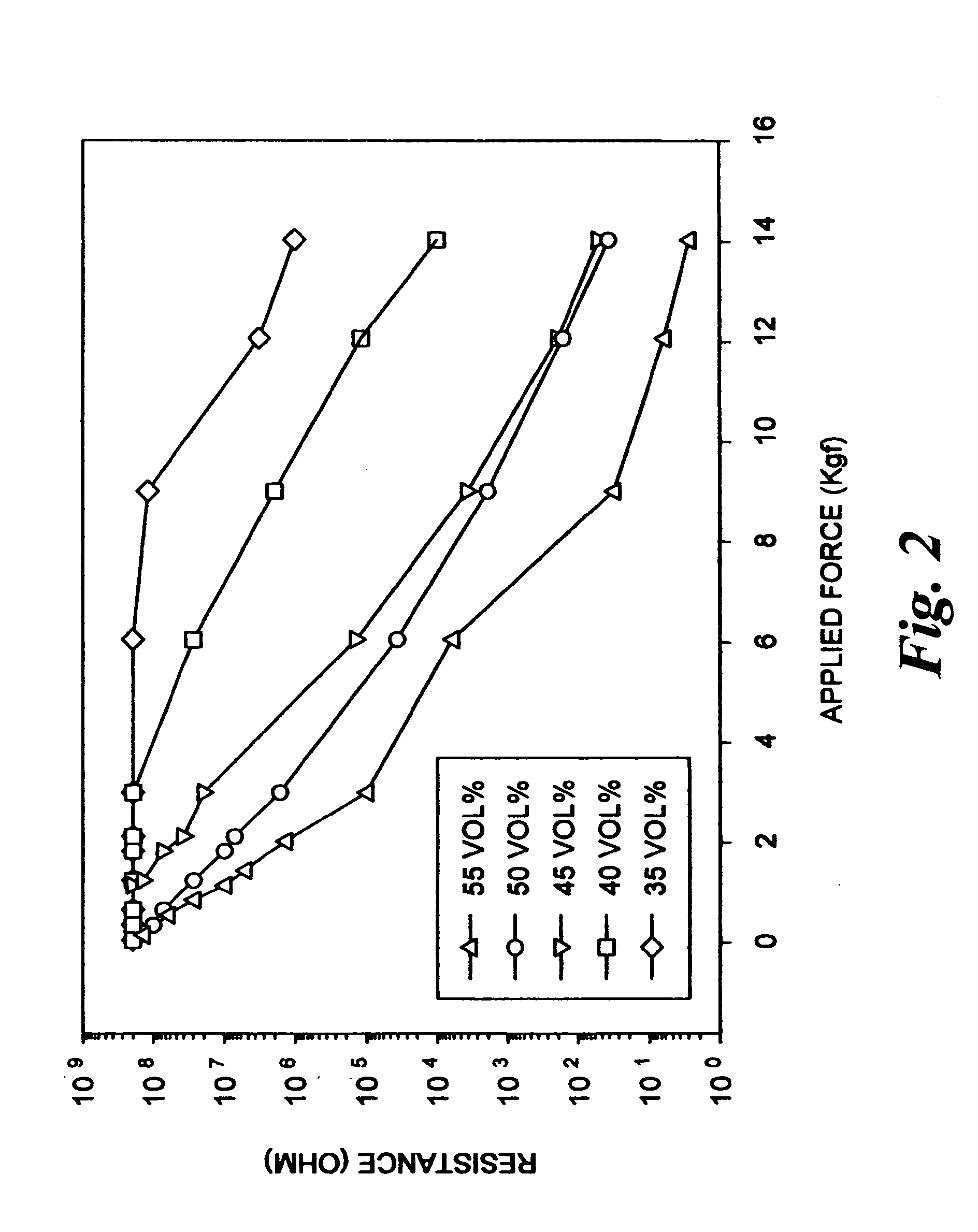High-sensitivity pressure conduction sensor for localized pressures and stresses
a pressure conduction sensor, high-sensitivity technology, applied in the direction of mechanical measurement arrangement, instruments, using mechanical means, etc., can solve the problems of affecting the dynamic range of instruments, affecting the pressure detection, and easy to be contaminated by dirt, moisture and other contaminants, etc., to achieve more accurate and detailed measurements, more sensitive, and easy to use
- Summary
- Abstract
- Description
- Claims
- Application Information
AI Technical Summary
Benefits of technology
Problems solved by technology
Method used
Image
Examples
Embodiment Construction
[0088] Referring now to FIG. 1a, a schematic representation of one embodiment of the sensor 1 is shown having a pressure conduction composite 2 disposed between two conductive layers 5, 6. An optional pair of non-conductive layers 51 and 52 contact the conductive layers 5 and 6, respectively, opposite of the pressure conduction composite 2.
[0089] Conductive layers 5, 6 include a variety of materials, such as metals and composites, and a variety of generally planar structures, including plates, foils, films, foams, weaves, and braids. The pressure conduction composite 2 is composed of conductive particles 3 within a non-conductive yet pliable and resilient matrix 4. The matrix 4 is a generally planar solid that surrounds and isolates the conductive particles 3 so as to maximize resistance and minimize conductance thereby preventing current flow between conductive layers 5, 6 at an ambient or biased pressure. Non-conductive layers 51, 52 isolate the sensor 1 so as to prevent electric...
PUM
 Login to View More
Login to View More Abstract
Description
Claims
Application Information
 Login to View More
Login to View More - R&D
- Intellectual Property
- Life Sciences
- Materials
- Tech Scout
- Unparalleled Data Quality
- Higher Quality Content
- 60% Fewer Hallucinations
Browse by: Latest US Patents, China's latest patents, Technical Efficacy Thesaurus, Application Domain, Technology Topic, Popular Technical Reports.
© 2025 PatSnap. All rights reserved.Legal|Privacy policy|Modern Slavery Act Transparency Statement|Sitemap|About US| Contact US: help@patsnap.com



